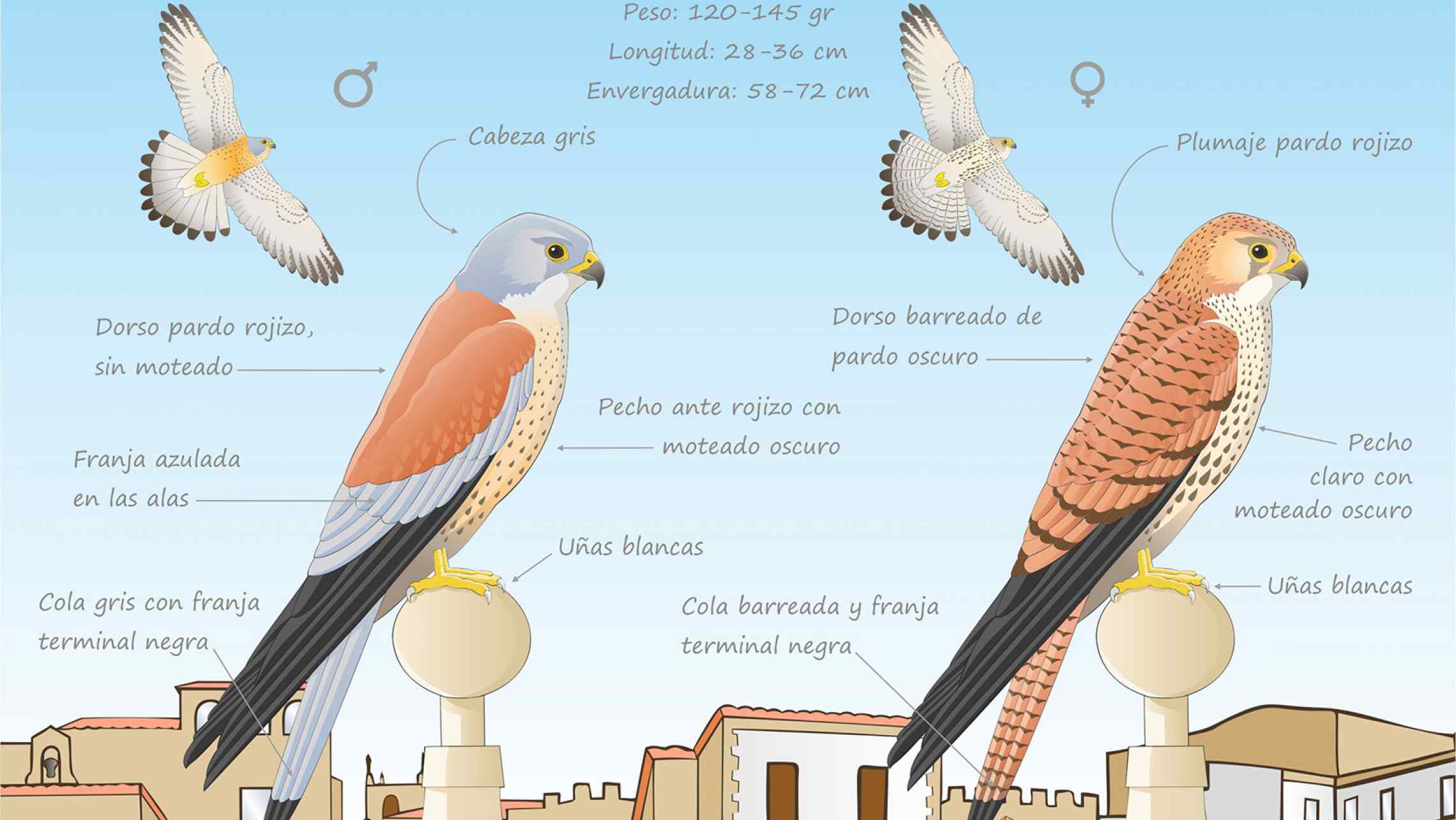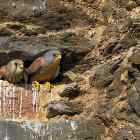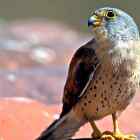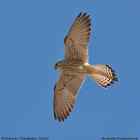As spring is coming and the lesser kestrels, the true stars of the Life-ZEPAURBAN project, are already landing in our towns and villages, let us give you some hints to help you to identify them.
This species is the smallest diurnal bird of prey breeding in the Iberian Peninsula. The male and the female have very different plumage as can been seen in the graph, while juveniles are very similar to the females.
It resembles the common species although it is smaller and there are certain differences such as the colour of its claws (white in the lesser kestrel and black in the larger species) or the lack of a moustachial stripe and a spotted back in the male. It has a characteristic high-pitched harsh call in three syllables which is often heard in chorus when it is in flight over its breeding colonies.
The lesser kestrel is a colonial species which nests in holes and roofs of buildings in towns and villages but also of farm buildings and houses in the country in agricultural areas. The clutch is laid in April or May and consists of 4 or 5 eggs which are incubated by both sexes for 26 days. After 4 weeks the chicks begin to leave the nest although they continue to be fed by their parents for a time.
Its preferred habitat is open country with sparse tree cover and a predominance of natural pastures and dry-farmed cereal crops, where it feeds mainly on invertebrates (grasshoppers, crickets, beetles, centipedes) but also on small rodents (voles, shrews) and reptiles (lizards). It can easily by identified by its peculiar manner of hovering to capture its prey.
The species is a summer migrant and from July onwards, after its breeding cycle has been completed, it leaves on the long journey to its wintering quarters in central and southern Africa. It returns to its nesting sites from mid-February onwards.







